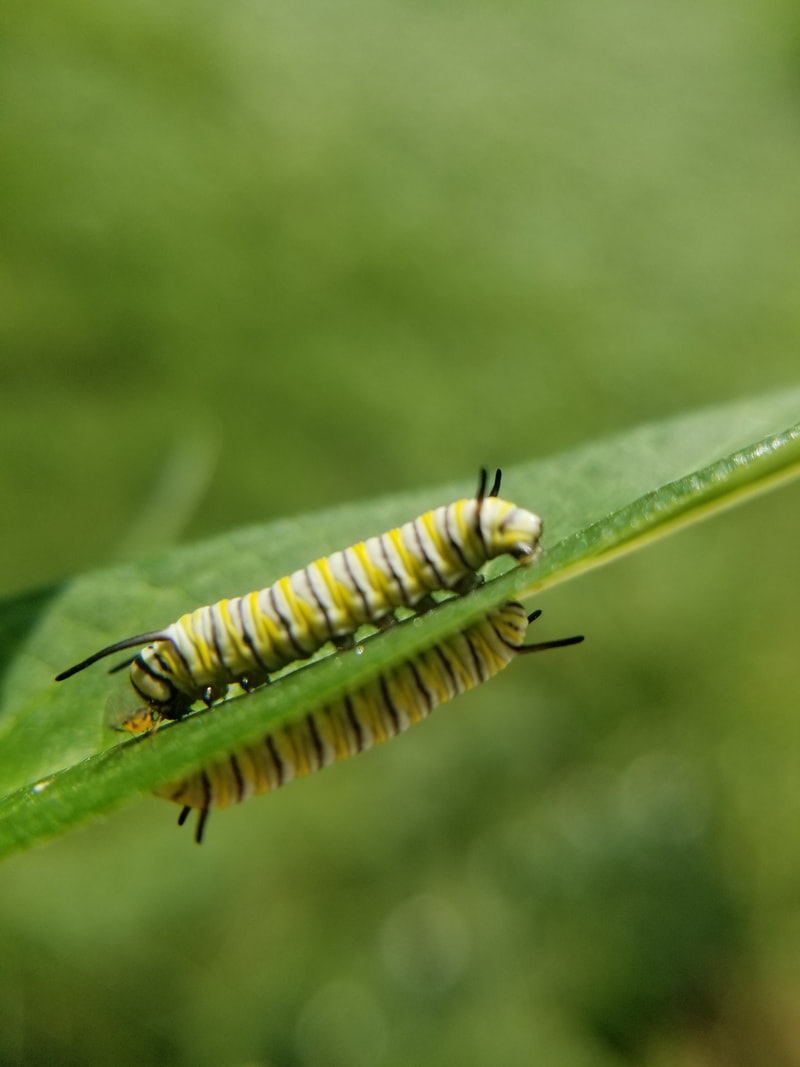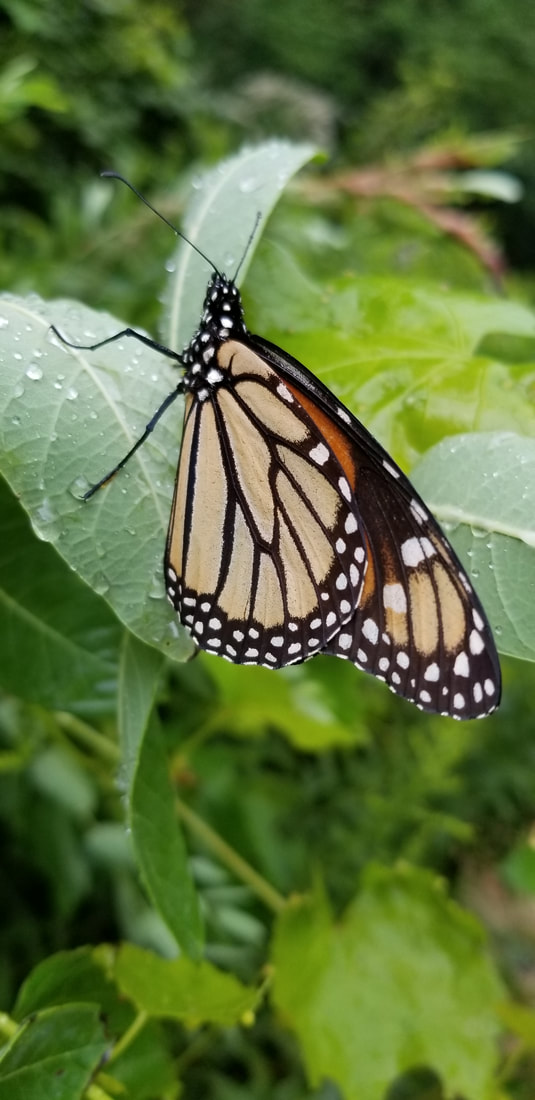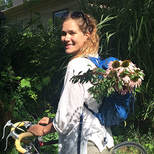Let's face it, pests are the bane of any gardener's existence.Although pesticides can be helpful in managing garden pests, they also have a number of drawbacks including: potential toxicity to humans, pets and pollinators. In fact, millions of pollinators die each year due to pesticides and tainted Milkweed is a common factor in Monarch mortality. Which begs the question: How do you get rid of the bad bugs while sparing your beloved pollinators and other beneficial bugs? Although the best option is to avoid pesticides altogether, many gardeners can't imagine not using any pesticides at all. Therefore, this blog will discuss pesticides with the lowest toxicity to pollinators and tips for safely applying pesticides. *Here is a list of EPA’s reduced risk pesticides that pose less risk to human health and the environment than existing pesticides. First off, What is a pesticide?Pesticides are a broad category of substances that are meant to deter, kill or discourage various types of pests such as weeds, nematodes, plant pathogens or fungi. The term pesticide includes herbicides, insecticides, nematicides, fungicide and other pest deterrents. 10 Tips for Using Pesticides SafelyKnow what type of insects you are targeting.Do not treat flowering plants. Do not spray where pollinators such as butterflies, bees and moths are actively foraging.When possible, eliminate weeds by mowing or pulling.Choose short residual materials and low-hazard formulations if insecticides absolutely must be applied during the flowering period to save the crop. Apply insecticides when pollinators are no longer foraging such as in the evening or early morning.Adjust spray programs in relation to weather conditions. If it is windy, do not spray.Read the pesticide label.When possible, remove bugs by hand.Reduce pressure of spray nozzle to prevent pesticide drift.If you choose to use pesticides, consider these safer options.Keep in mind that no pesticides are completely safe to pollinators but if you follow these guidelines, you may be able to minimize your impact. This is a list of pesticides that are considered pollinator safe by the Michigan State University extension office. Insecticidal soapsInsecticidal soaps are most effective on soft-bodied insects such as aphids, adelgids, lace bugs, leafhoppers, mealybugs, thrips, sawfly larvae, spider mites and whiteflies. They are not effective on pests as a residue on the plant surface, and therefore are not toxic to pollinators after the spray dries. They can be safely used at any time to control pests on plants that are not attractive to pollinators, but on pollinator-attractive plants spray at dawn or dusk when pollinators are not present. Horticultural oilsLike insecticidal soap, horticultural oils work best when the spray comes in contact with the pest. Once the oil spray dries, it does not have much effect and becomes safe for pollinators and other beneficial insects. Horticultural oil can be safely used at any time to control pests on plants that are not attractive to pollinators, but on pollinator-attractive plants they should be sprayed at dawn or dusk when pollinators are not present. Bacillus thuringiensis (B.t.)While a B.t. strain works well for its target pest, it also breaks down quickly in sunlight, becoming ineffective after a few days. This makes B.t. very safe for pollinators, predatory insects and mammals. B.t. can be sprayed even when bees or butterflies are present. MetarhiziumThe fungus Metarhizium anisopliae is found naturally in soils and infects and kills insects. M. anisopliae does not detrimentally impact honey bees and is being studied as a bio-insecticide of varroa mites, a pest of honey bees. SpinosadSpinosad is highly toxic to bees. However, toxicity is greatly reduced once the product has dried on the foliage, within three hours to one day depending on the product. Therefore, avoid use if bees are active, and if applications are needed, apply in the evening when bees are not active and product has time to dry. This product suppresses a broad number of caterpillar species and should not be sprayed or allowed to drift in known habitats for threatened or endangered species of caterpillars and butterflies. PymetrozineAs a caution, apply pymetrozine in the evening, night or early morning when bees and butterflies are not visiting blooming plants. Since this product is selective for aphids and whiteflies, there should be no impact on other pollinators or natural enemies. AcequinocylAcequinocyl is considered nontoxic to bees and can be applied at any time. Since acequinocyl is selective for mites, other pollinators and natural enemies should not be affected. More ResourcesThe Xerxes Society. https://xerces.org/neonicotinoids-and-bees/
UMass Extension https://ag.umass.edu/fruit/ne-small-fruit-management-guide/appendices-resource-material-listings-conversion-tables-0 North American Pollinator Protection Campaign http://pollinator.org/assets/generalFiles/NAPPC.pesticide.broch.Consumer-FINAL-05-27-10_170527_155657.pdf Pesticide Environmental Stewardship. https://pesticidestewardship.org/ipm/ Michigan State University Extension, How to protect and increase pollinators in your landscape. http://msue.anr.msu.edu/resources/how_to_protect_and_increase_pollinators_in_your_landscape/how_to_control_invasive_pests_while_protecting_pollinators#subpage BeyondPesticides. https://www.beyondpesticides.org/assets/media/documents/pollinators/nolongeraBIGmystery.pdf
17 Comments
Sandy Griffin
6/29/2019 08:59:38 am
B.T. is used to kill caterpillars so it doesn’t allow a butterfly to emerge. Not safe!
Reply
Nicholas Mohacsy
3/31/2021 11:13:38 am
Thank you for the tip on B.t. I try to raise monarch butterflies.
Reply
Rebecca Allen
8/25/2022 07:41:14 am
I am reading up on how to deter the aphids & other insects setting up shop in close proximity to my Milkweed (& Monarch caterpillars, along w/ the daily visiting Full- grown butterflies) & am having a very difficult time.
Reply
Brandy
6/3/2024 12:14:46 pm
Did you find anything? I have the same problem with aphids on my milkweed! 4/2/2021 08:01:07 pm
Some people use cedar oil to repel mosquitoes and ticks in their gardens. Is it safe for monarch eggs and caterpillars?
Reply
Nicholas Mohacsy
4/3/2021 08:22:55 am
Thank you for your reply.
Reply
Joshua Hurni
7/6/2021 10:02:54 pm
I saw this on a site that sells cedarwood oil and found it helpful.
Reply
6/24/2021 10:58:34 pm
I just wanted to thank you for posting an awesome article. I've been looking for ways to make my yard safer and this is very informative.
Reply
10/14/2021 08:22:56 pm
I love the article you posted on I didn't know that insecticidal soaps are pollinator safe. That's awesome because it means I can spray them at any time!
Reply
4/6/2023 10:18:31 am
I agree. Pesticides are good but they can also harm to pollinators.
Reply
Your meticulous attention to detail and comprehensive overview of the subject matter have been immensely informative and eye-opening. Your emphasis on the potential harm pesticides can pose to pollinators, and especially the impact on Monarch butterflies, is a crucial reminder of the delicate balance we must maintain in our gardens. Your incorporation of practical tips for safe pesticide application is invaluable, and I now feel equipped to make informed choices to protect both my plants and pollinators. The list of pollinator-safe pesticides you provided will undoubtedly serve as a reliable reference for my gardening endeavors. Thank you for sharing your expertise and fostering a greater understanding of responsible pesticide usage to ensure the well-being of our cherished pollinators.
Reply
StaceyScaccia
1/24/2024 06:16:21 am
BT (Bacillus thuringiensis) is very toxic to monarch caterpillars!
Reply
Sanda Dowell
5/26/2024 10:38:37 am
There is some good information here but you may want to be a little more forthcoming with the names of the things that are actually safe so that beginner gardeners may be able to use the proper ingredients. Some oils that are safe for plants are not safe for bees and butterflies. Use more laymen's terms. Always speak to your audience like they don't have a college degree.
Reply
Leave a Reply. |
AuthorRebecca Chandler Archives
March 2024
Categories |




 RSS Feed
RSS Feed